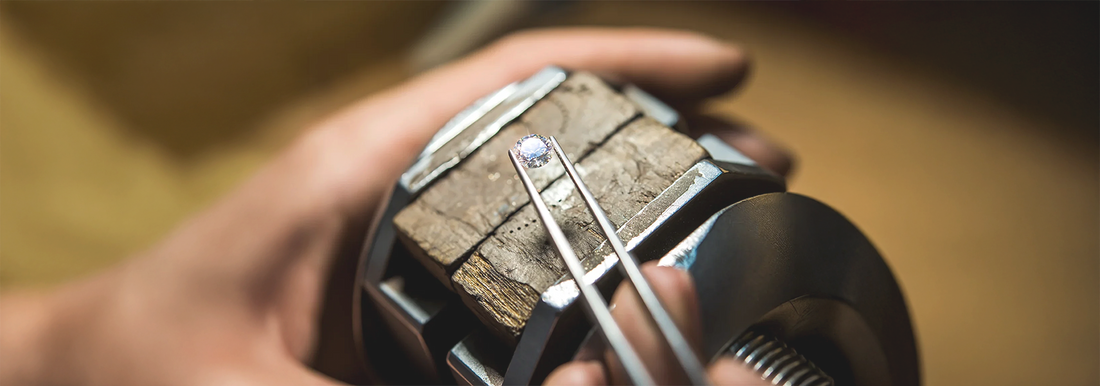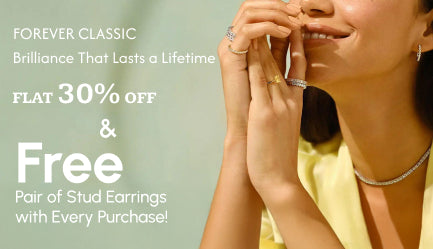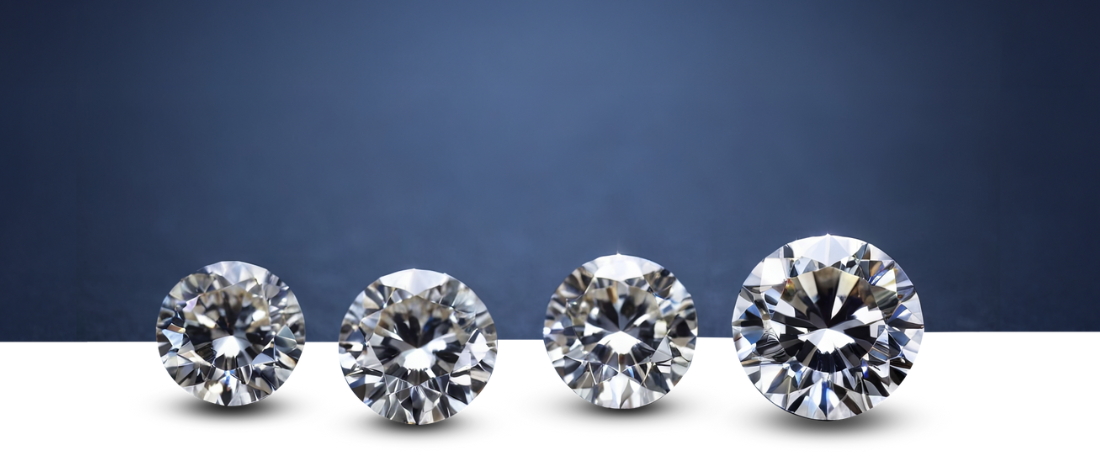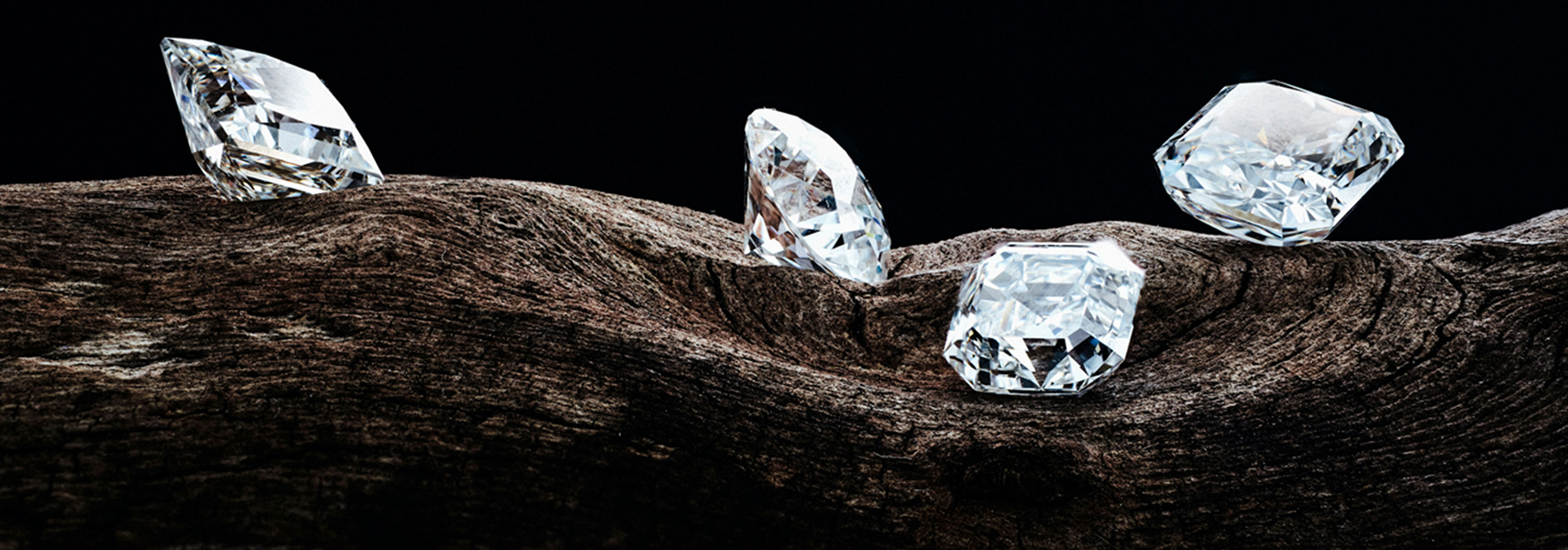You hold an exquisite diamond-ring. Its sparkle is very bright, and it catches the attention of your eyes even by minute and tiny movements. It looks so perfect but suddenly you have a thought in the mind, Is this a real diamond? Whether its about buying a new piece of jewelry or getting a gift or you are just plain curious about a old family heirloom. You must know how to tell if the diamond is real-or-not.
The thing is that you do not necessarily need to be a jewelry expert to know this. There are very simple methods in determining whether a diamond is authentic-or-not. While some of these can be done right from home, others would need more close-up and under the right light. Now, you would know whether that diamond is right in front of you authentic or a counterfeit.
In this guide let us see some of the easiest ways to find a real diamond. With that knowledge, you will be able to tell anyone with absolute certainty whether or not that sparkly stone is a real diamond. Are you ready to discover the secrets? Let's get started
In this guide let us see some of the easiest ways to find a real diamond. With that knowledge, you will be able to tell anyone with absolute certainty whether or not that sparkly stone is a real diamond. Are you ready to discover the secrets? Let's get started
Here is How to Tell if a Diamond is Real or Fake
The beauty of diamonds is unmatched. However, with so many imitations going around, how do you know if a diamond is real? Whether you are looking to buy an engagement-ring or just a piece of jewelry or even want to know if your diamond is genuine, understanding how to differentiate between a natural diamond and a fake one matters. Lets see some key factors that can be helpful in determining whether your diamond is real-or-not

1. Luster
One first thing you will always notice about a diamond is its shine. Real diamonds have a unique-kind of sparkle called luster which is a combination of their ability to reflect light and the brilliance they give off. A real-diamond will sparkle brightly from every angle with a deep intense shine. Fake diamonds often lack that same intense sparkle. Instead, they may look dull or cloudy.
2. Color
Diamonds exist in a range of colors-from colorless to dark yellow and brown. True diamonds are graded on a color scale. The most costly diamonds are colorless. If a diamond you see has a distinct yellow or brown color, it might be fake, or it might be of low grade. Imitation or synthetic diamonds frequently display a color that is not common among natural diamonds.
3. Reflection

Another characteristic of a real diamond is reflection. A real diamond reflects white light and colored light, too, which produces an exquisite display of colors called "fire." A fake diamond may only reflect white light, and the vibrant rainbow flashes which a true diamond gives off will be missing.
4. Weight
Diamonds are denser than most of the materials used to create fake stones. If you can pick up the stone, a true diamond will feel much heavier than a counterfeit version of the same size. You might be able to tell if it's cubic zirconia or glass if it feels light. You can compare its weight with a similar-sized stone to determine if it is real.
5. Fog Test
One of the simplest tests to check whether a diamond is real-or-not is the fog test. Hold it close to your mouth so that the air exhaled hits it, just like you do on your mirror in the morning. A real diamond does not fog up because it doesn't hold heat, thus, it will clear out nearly immediately. The fake stones will fog up and take longer to clear up for a few seconds.
6. Hardness & Durability
Diamonds are the hardest natural material on Earth so they are very strong. You can do a scratch test on your stone if you doubt whether it is real. Just be careful not to break your stone. Take the stone and scratch glass with it. A diamond must be real if the glass is scratched. A fake diamond won't have that power and will probably get scratched instead of scratching the glass.
7. The Thermal Conductivity Test
Diamonds are superb conductors of heat. If you possess a thermal conductivity tester, then you will know whether your stone is a real diamond or not. Whenever the tester is touched to the diamond, a high reading should appear because the diamond will conduct heat. On the other hand, the fake stones do not conduct heat just the same and the tester shows a low or no reading.
8. Diamond Tester/Crystal Tester

A diamond tester or crystal tester is a device designed to determine if a piece of jewelry contains a real diamond. The tester does this by testing the jewelry for conductivity. The tester is a handheld device that measures the response of the stone to heat or electricity.
Real diamonds have properties that will distinguish them from simulants. A diamond tester is a good tool to have, but it is not foolproof. It can't easily distinguish between diamonds and moissanite which closely resembles it in appearance. It is thus used in conjunction with other tests.
9. UV Light Test
This light generally causes most genuine diamonds to glow with a blue hue. This color comes from the fact that there are a few forms of natural impurities in diamond which shows a response to UV light. Even counterfeit diamonds will respond to this phenomenon by showing some color but that could be varied, none in specific. A diamond that doesn't respond to UV doesn't mean that it's not real.
10. The Fire Test
Real diamonds are appreciated for the fire that breaks light into several colors. If you shine the light through a real diamond, then you will see the flashes of colorful lights in the form of rainbow. Fake diamonds may reflect light, but they will not display the same type of deep spectrum of colors. So how to tell if a diamond is real, if you perform this fire test, you will be able to tell.
How to Recognize Synthetics and Simulants
As diamonds get sold in an increasing manner, the assortment of synthetics and simulants gets enlarged, which are looking like a diamond. Here are some of the common ones and how to spot them quickly without much hassle:
1. Lab-Grown Diamonds

These are some synthetic created artificially under specific terms of needs as accurate within labs.Their chemical composition and physical properties are similar to those of a natural diamond, so they look, feel, and behave like diamonds. The easiest way to identify whether a given diamond is lab-grown or not is by asking for the certification. Most lab-grown diamonds come with a certificate by a reputable gemological institute stating that they originated synthetically.
2. Moissanite
One most popular Moissanite diamond alternatives that gives brilliant sparkle more than diamond is moissanite. Though it look like a diamond, moissanite is not diamond. The most apparent variation is that moissanite has a higher refractive index so it can sparkle even more than a diamond. A fast way to identify moissanite is by its fire as it usually displays more rainbow colored flashes than a real diamond. You can also test its hardness using a tester to check whether it is a diamond-or-not
3. Cubic Zirconia
Cubic Zirconia is probably the most popular diamond synthetic. It may look like a diamond at casual-inspection but it has much less hardness and much less sparkle. CZ looks duller and will sometimes display rainbow colors that are not present in a diamond. It can be identified easily with a simple scratch test or weighing it as CZ is much lighter than a diamond.
4. White Sapphire
White sapphires are real gemstones which resemble diamonds but are quite much softer and less shiny to the naked eye. People often use white sapphires in jewelry as alternative substitutes for diamonds. Unlike real diamonds, a white sapphire cannot show off "fire" and does not catch the reflection of light. Because of this, you can easily identify a white sapphire from a diamond just by looking at them through how less brilliant they will be.
5. White Topaz
Another diamond simulant is white topaz, but it is softer and much less brilliant. In low light, it appears shiny, but does not sparkle with the intensity and fire that a diamond emits. A white topaz is also lighter than a diamond and often has a cloudy appearance.
Conclusion
If you are buying a new diamond, knowing how to tell if a diamond is real or not can save you from being scammed by some fake ones. There are many ways to confirm the authenticity of your diamond, ranging from simple tests like the fog test to more advanced tools like diamond-testers. Remember, diamonds are unique, and their brilliance comes from a combination of natural properties that no simulant can perfectly replicate.
FAQs
Can a diamond tester be wrong?
Yes while diamond testers are highly accurate, they may struggle to distinguish diamonds from other similar stones like moissanite. It is best to use a combination of test.
Is the value of labgrown diamonds less than that of a natural-diamond?
Labgrown diamonds are generally cheaper than a natural diamond although they are chemically the same. They are just worth less since they are in more abundant supply and also man-made.
How can you determine whether your diamond is a real diamond or moissanite?
Moissanite has a different flash and fire than a diamond. It also usually has more rainbow-colored flashes. A diamond tester can help tell the difference, too.
Can a diamond get scratched?
Diamonds are very hard but they can still be scratched or damaged if they come into contact with harder materials or metals. Be always cautious when dealing with your diamond.
What is the best-way to test a diamond at home?
The fogtest is one of the easiest and most effective ways to check if a diamond is real. Simply breathe on the stone and see if it clears up quickly. A real diamond will not hold onto the fog for long.
What makes diamonds so expensive?
Diamonds are rare, hard, and difficult to mine. And also, their brilliance, their rarity, and their cultural aspects make them very expensive.










